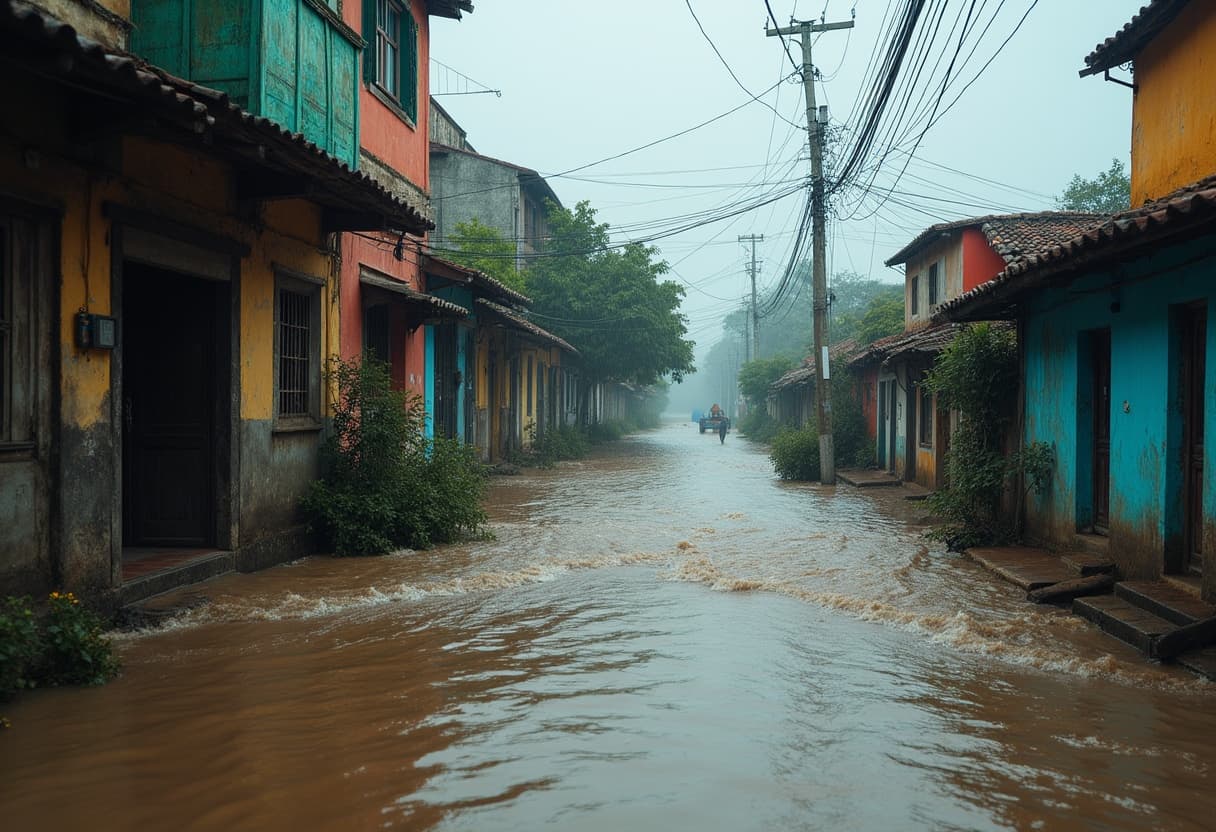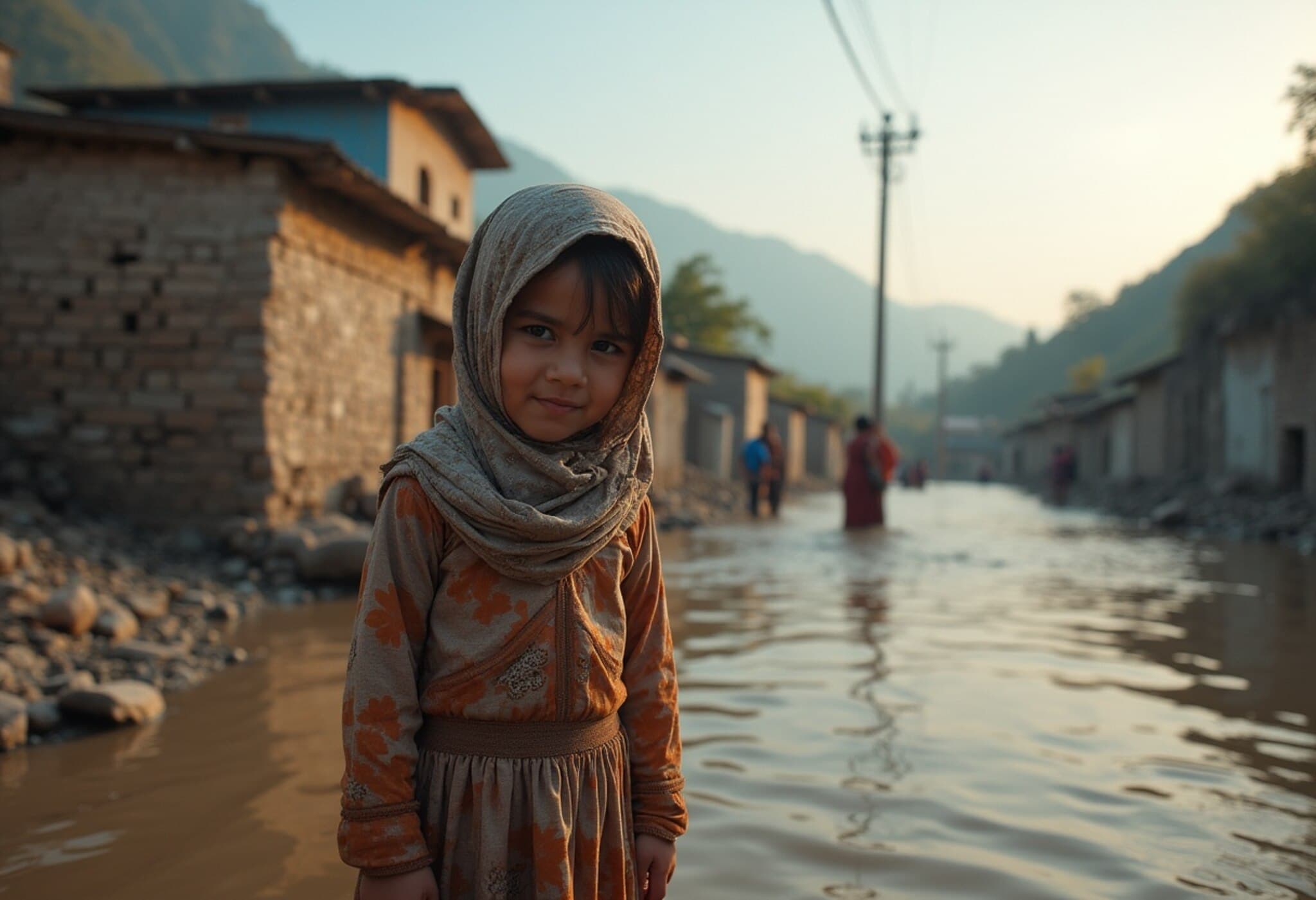Eastern Seaboard Endures Prolonged Heavy Rains Following Weekend Flooding
After a harrowing weekend marked by flash floods that wreaked havoc across the US Eastern Seaboard, communities are now bracing for more rainfall as a sluggish summer storm lingers over the region. Authorities have issued flood warnings extending into Tuesday morning, particularly for parts of New Jersey, while the National Weather Service (NWS) forecasts persistent downpours through midweek.
Devastating Impact of Sudden Floods
The intense rain unleashed on Monday night inundated key states including New York, New Jersey, Pennsylvania, and Maryland, severely disrupting transportation networks, stranding vehicles, and triggering multiple emergency rescues. In New Jersey alone, Governor Phil Murphy declared a state of emergency, urging residents to stay indoors for their safety.
Visuals from CBS depicted dramatic rescue operations in Scotch Plains, NJ, where emergency personnel navigated raging floodwaters equipped with flotation devices to assist stranded motorists caught off-guard by the rapid rise in water levels. This harrowing situation underscored the inherent dangers of flash floods and the urgent need for vigilance on the roads.
Authorities Warn of Mounting Risks and Advise Caution
The flood threat stretches beyond New Jersey, with warnings extending southwards as far as Virginia. The NWS has emphasized the potential for heavy downpours and widespread flash flooding driven by a moisture-saturated summer air mass sweeping across the eastern and central United States.
In a sobering advisory, weather officials cautioned motorists, reminding the public that "most flood deaths occur in vehicles" and urged those facing flooded roadways to "turn around, don't drown." This message comes amidst reports of perilous driving conditions and multiple road closures.
Urban Flooding Paralyzes New York City
New York City saw some of the most dramatic effects, with social media inundated with videos showing murky brown floodwaters spurting like geysers near subway entrances, causing service disruptions and dangerous conditions. Key subway lines were partially or fully obstructed, while gridlock plagued major city arteries.
Moreover, the region’s three major airports—JFK, LaGuardia, and Newark—temporarily halted departures, leading to numerous flight cancellations and widespread travel disruptions. These challenges compound the ongoing recovery efforts and highlight the vulnerability of urban infrastructure to extreme weather events.
Widespread Emergency Responses in Pennsylvania
Meanwhile, in Lancaster, Pennsylvania, authorities declared a disaster following flash floods that forced emergency responders to perform at least 16 water rescues and evacuate residents from submerged basements. Official reports indicated that certain areas received over 7 inches of rain within a five-hour window, overwhelming local drainage systems.
Staten Island recorded rainfall totals between 4 to 6 inches, according to local emergency alerts, contributing to the cascading crises in the New York metropolitan area.
Calls for Climate-Resilient Infrastructure Gain Momentum
Political leaders and climate advocates are seizing on the recent floods to renew calls for significant investments in infrastructure upgrades designed to withstand evolving climatic patterns. Zohran Mamdani, a Democratic candidate for New York City mayor, underscored the urgency of adapting urban systems to new realities, stating via social media, "We must upgrade our infrastructure for this new climate reality."
Looking Ahead: What to Expect
The NWS indicates that the storm’s heaviest rains will continue over the southern Mid-Atlantic and Appalachian regions on Tuesday before shifting northward by Wednesday. This extension of wet weather raises concerns about amplified flood risks and the capacity of overwhelmed emergency services to respond effectively.
Contextualizing the Crisis: Linking to Past Tragedies
The current storm exacerbates ongoing climate stress in the US, following the devastating Fourth of July floods in central Texas that claimed at least 131 lives, including the tragic deaths of children, and left scores missing. Such back-to-back events highlight growing vulnerabilities and the pressing need for comprehensive climate adaptation strategies at all levels of government.
Editor’s Note
The sustained heavy rains along the Eastern Seaboard signify more than just a weather event; they expose critical gaps in infrastructure resilience and emergency preparedness. As climate change intensifies the frequency and severity of such storms, the question remains: will the region rise to the challenge of safeguarding its communities, or continue to be caught off guard by nature’s growing fury? Readers are encouraged to stay informed, follow safety advisories, and consider the broader implications of these unfolding events on urban planning and public safety.



















